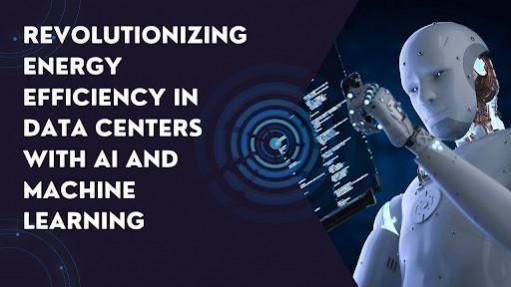
Artificial Intelligence (AI) and Machine Learning (ML) are transforming energy management in data centers, a critical sector known for its high energy demands. Anandkumar Kumaravelu, a leading expert in data center technology, delves into how these innovations enhance energy efficiency, sustainability, and operational performance in data centers, providing valuable insights into the future of digital infrastructure.
Harnessing AI for Predictive Analytics and Monitoring
AI and ML are essential for predictive analytics and real-time monitoring in data centers. Modern facilities are equipped with sensors that gather vast amounts of data, including temperature, humidity, power consumption, and server utilization. AI systems analyze this data to predict potential equipment failures and optimize energy consumption. Predictive maintenance, for instance, allows operators to address issues before they cause system downtime, ensuring that servers operate efficiently and reducing unnecessary energy waste.
Through advanced algorithms, AI can predict server workloads and adjust cooling systems accordingly, leading to up to 40% energy savings in cooling operations. Additionally, the ability to forecast equipment failures up to 30 days in advance enables timely interventions, further improving operational efficiency and reducing costs.
Dynamic Cooling Management for Optimal Energy Use
AI-driven cooling systems create real-time thermal models, adjusting cooling dynamically based on heat distribution. This localized approach reduces energy waste by targeting high-heat areas and minimizing cooling in low-demand zones. Additionally, raising temperature set points slightly saves energy while maintaining optimal IT equipment performance and preventing overheating.
Smart Workload Scheduling: Maximizing Resource Utilization
AI-powered workload scheduling optimizes resource allocation by balancing tasks across computing resources in real-time. AI systems analyze server capacity, energy consumption, and predicted demand to ensure efficient utilization of resources. By consolidating workloads during low-demand periods, fewer servers are needed, reducing both energy consumption and cooling requirements.
Smart scheduling also minimizes resource stranding, where certain server components remain underutilized. By pairing complementary tasks, AI can ensure balanced use of both CPU and memory, maximizing resource efficiency. This approach not only improves performance but also reduces energy consumption by up to 30%.
Automated Peak Shaving and Energy Management
AI-driven systems optimize peak shaving by monitoring and predicting power demand, redistributing workloads, activating energy storage, and reducing non-essential operations to flatten consumption, lowering costs and improving grid stability. AI also integrates renewable energy sources by predicting availability through weather forecasts, aligning operations with green energy generation, reducing grid reliance, and enhancing sustainability.
Real-Time Optimization for Continuous Efficiency
AI's real-time optimization in data centers continuously analyzes sensor data, adjusting cooling and server workloads to maintain peak efficiency. This dynamic responsiveness allows AI to adapt to changing conditions like server demand spikes or temperature fluctuations. As AI technology advances, it will enable even more precise control, further enhancing energy efficiency and operational performance in data centers.
Enhanced Maintenance and Extended Equipment Lifespan
AI's role in predictive maintenance extends the lifespan of data center equipment by identifying potential issues before they lead to failure. Early detection allows for timely repairs, preventing inefficient energy use due to malfunctioning hardware. By ensuring that equipment operates under optimal conditions, AI-driven maintenance strategies reduce the energy intensity of data center operations.
Extending the lifespan of data center components not only lowers operational costs but also contributes to sustainability efforts by reducing the need for manufacturing and replacing energy-intensive equipment.
In conclusion, Anandkumar Kumaravelu highlights the transformative potential of AI and ML in revolutionizing energy efficiency in data centers. These technologies optimize every aspect of data center management, from predictive maintenance to real-time performance adjustments. As AI and ML continue to evolve, they will play an increasingly crucial role in reducing energy consumption, lowering operational costs, and driving sustainability in the digital age.

















